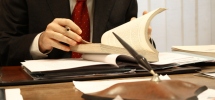Being involved in a motor vehicle accident can be an extremely stressful experience that you may not be sure how to navigate. The most stressing part of an accident may not even be the accident itself at times, but the events that occur afterward once you have to start dealing with police officers, the other driver, their insurance company, and your own insurance company. It is often like that due to the fact that you will need to receive compensation for damages to your vehicle as well as compensations for any injuries you may have sustained. However, you may also need to pay the other driver money if you have been deemed liable for the situation that has occurred between you and the other party. This raises the question: who is liable after a motor vehicle accident in Texas? There are a variety of factors that play into determining who is reasonable for the car accident and who may possibly need to pay the other driver compensation if the situation calls for it. Here are the factors that play into deciding who is liable after a motor vehicle accident in Texas and how motor vehicle accident lawyers can assist you with the aftermath.

Texas Car Accident Statute Of Limitations
In general, a statute of limitations is a law set by the state that sets a time limit on your right to bring forth a lawsuit. Texas is in fact a no-fault car insurance state, meaning that you must file a claim under the personal injury protection coverage to get compensation for any medical bills and other financial losses, no matter who caused the crash. However, if your injury or insurance claim meets certain prerequisites, you can bring a claim directly against the at-fault driver by stepping outside of the no-fault area. With the statute of limitations in place, if you do decide to file a claim against the other driver, you must do so within the time limit because if miss it and attempt to file a car accident lawsuit after the deadline has already pass, the Texas court system will most likely dismiss your case. The only way your case will not be dismissed is if a rare exception applies to your situation so that the deadline can be extended. Generally, the time limit for the Texas Statute of Limitations for car accidents is four years, beginning from the date of the crash to when you get your accident case started in the court system. It is a good idea to remain knowledgeable on this if you think that you will not be deemed liable and would want to bring forth a lawsuit against the other driver.
Comparative Negligence In Car Accident Cases
Before being able to understand what factors can play into determining who is reasonable for the accident, you should first understand what can possibly occur if you are deemed partially understand. Many people know what happens if the other party is deemed to be reasonable: the other driver will pay to compensate you for medical bills and any other losses you suffered through their insurance company. However, Texas follows a “pure comparative fault” rule which is when both drivers are found to share blame for a car accident. During the case, the jury will be asked to base their decision based on the presented evidence: the total amount of the plaintiff’s damages and the percentage of fault that belongs to each driver. Under this rule, the amount that the plaintiff is meant to receive is reduced by a percentage that is equal to their share of fault for the accident. This fault rule in Texas applies even if you are determined to be more responsible for the accident than the other driver. You are still technically entitled to your percent of the total damages but you will still have to pay the other driver for their percent of their damages.
Collect Evidence
No matter whether or not it seems obvious to people involved in the car accident who’s fault it is, fault can be difficult to prove. That is exactly why in order to establish liability, you must collect concrete evidence that you were obeying all traffic laws and that the other driver was, in fact, not. One of the most important and easiest methods for collecting concrete evidence is through taking pictures. Pictures allow both the judge and jury to clearly see the damage you and your car has sustained as a result of the accident. As well, taking pictures of the accident site, such as traffic signs, debris, obstructions, and other objects on the roadway, can further prove that who was at fault for the motor vehicle accident. In addition to pictures, it is also good to gather statements. If there were any witnesses at the scene of the crash, you can request either a written or recorded statement of what they exactly observed. It is even better if there are multiple people who can all agree on the mistakes made. Repair statements for your car and medical records can also resolve any problems about how serious your injuries were or how badly damaged your car was. Towing records, bills from mechanics or body shops, and statements from your doctors can refute the other drivers claims.
What An Accident Attorney Can Do For You
It is always a great idea to hire a qualified motor vehicle accident lawyer, like any of the lawyers from Amaro Law Firm, to work with you on what must be done. A lawyer will be able to help their client, aka you, receive the compensation that is deserved from those responsible so that you can recover for losses. Using an attorney from Amaro Law Firm will allow you to work with someone who has the knowledge and experience that can help make the process much easier. If you wish to to settle your case, contact the firm today so that you can set up an appointment to receive free consultation today!




